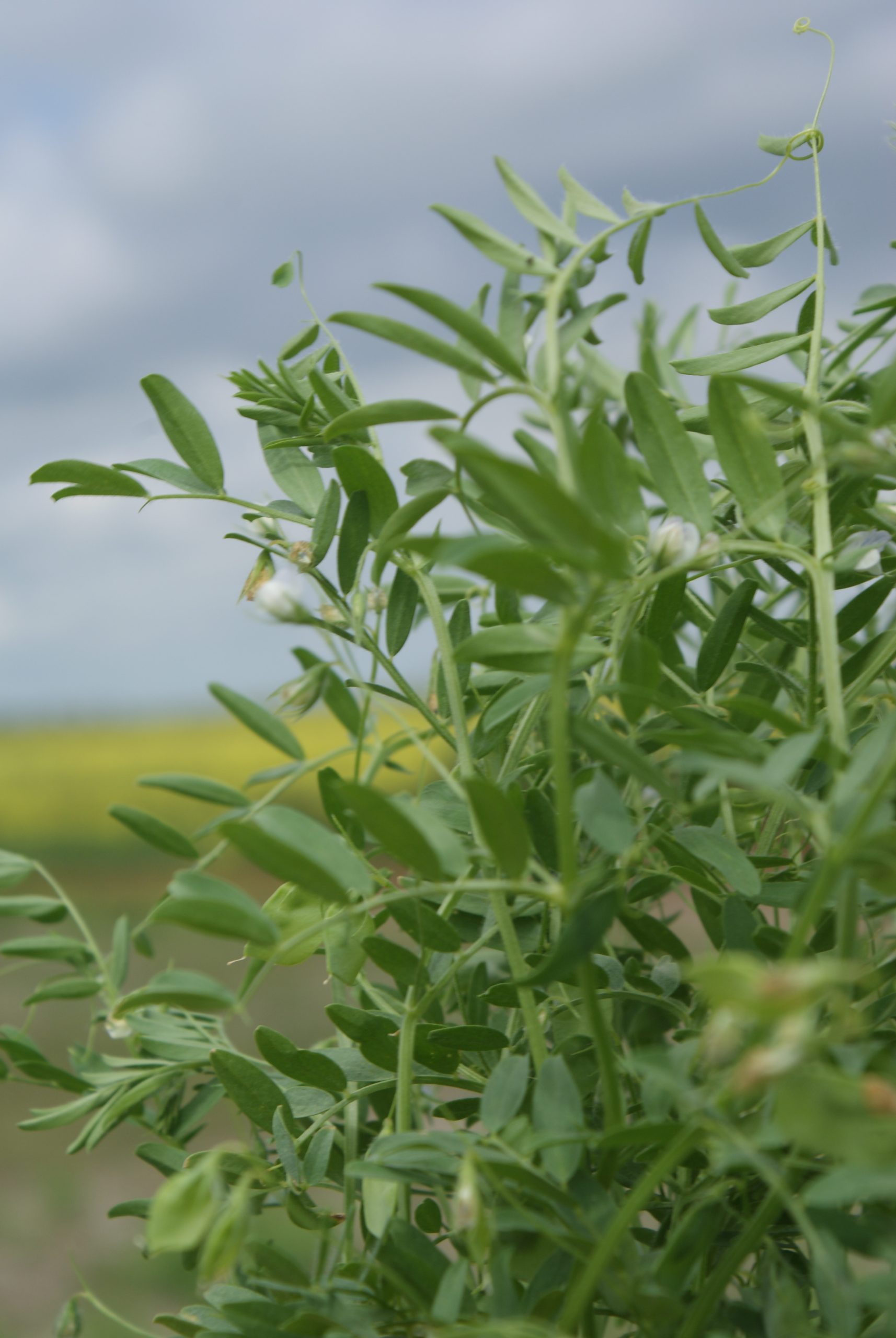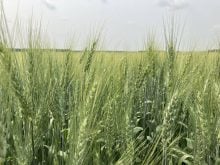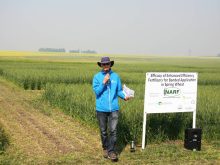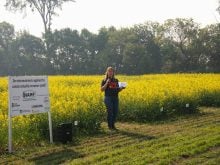This year’s rainy June passed along an increased risk of anthracnose to Saskatchewan’s lentil crops.
With minimal methods of treatment, the big question is when will resistance to the foliar disease be achieved?
Follow all our Ag in Motion coverage here
Read Also

Why feds imposed EV tariffs
Moe and Kinew have a fight on their hands when it comes to eliminating the EV tariff. Canada has to worry about pissing off the U.S. and Mexico and hundreds of thousands of auto workers.
The limitations to the process, such as continued market opposition to gene editing, means success is still a few years away.
However, significant advancements are being made.
Standing in front of a fababean plot at Ag in Motion 2025, Ana Vargas, University of Saskatchewan lentil and fababean breeder and an Agri-Food Innovation Fund Chair, gave a brief history of the issue.
“What happened is, lentils used to be resistant to anthracnose because we know the sources for resistance in the germplasm,” she said.
“But when all programs switched to only IMI tolerant … we lost a lot of that resistance. So that became, again, a priority.”
That switch to IMI tolerant herbicides decreased genetic resistance to the disease, resulting in decreased efficacy of fungicides to treat lentils.
Research is focusing on identifying the trait of IMI tolerant germplasm and bringing the anthracnose resistance trait from wild lentils to the cultivated lentils.
But wild lentils can be a “nuisance.”
“It’s not an easy trait to breed for, and the reason is because the resistance is in wild lentils that are in the tertiary gene pool,” Vargas said.
“Meaning they are far related to cultivated lentils.… It’s not straightforward just to move that resistance; you bring all the other stuff, too.”
“Other stuff” includes pods shattering easily and difficult harvesting.
This part of the research is being led by Sabine Banniza, the Ministry of Agriculture Strategic Research Program Chair in Pulse Crop Pathology, who has been researching this resistance for 20 years.
“For us as a program, we’re just trying to work very close with her,” said Vargas. “And making sure we get anything that she’s identifying to our latest varieties. I think we have F2s or F3s now, so commercially means that in four or five years we might have something resistant.”
This translates to seven to eight years until it gets to growers, because of the three year registration period.
In the meantime, Vargas recommends producers to consider plant density and crop rotation to minimize disease risk.
“For foliar, the four-year rotation is fine,” she said.
“However, because of root rotting diseases, lentils should go on a seven, eight-year rotation now. But hopefully we have fababeans and others that break the root rotting diseases, but for pathogens like foliar pathogens, four-year rotation easily.”
If planting lentils the first year, the most ideal rotation would be to follow with a fababean or chickpea crop a few years later among other years of cereal and oilseeds, and concluding with lentils again in the eighth year to break both foliar and root rot diseases.
Peas are not recommended in the lentil rotation because they’re much too similar. The choice is to plant lentils or peas paired with fababeans or chickpeas.
Density is necessary because increased proximity of plants will allow fungal spores to spread much easier. And with Strobulin (Group 11) fungicides becoming insensitive to the pathogen, multiple methods to reduce risk is key.
Once genetic resistance is achieved, it will be easier to continue building it in the germplasm of future varieties. However, as resistance is achieved, in the natural order of things, the disease will eventually evolve or produce new races of the pathogen.
From there, it’s “just a matter of keeping an eye on things”, says Vargas.
A more in depth story on Banniza’s progress will be available in Glacier Farm Media publications in the coming weeks.
















